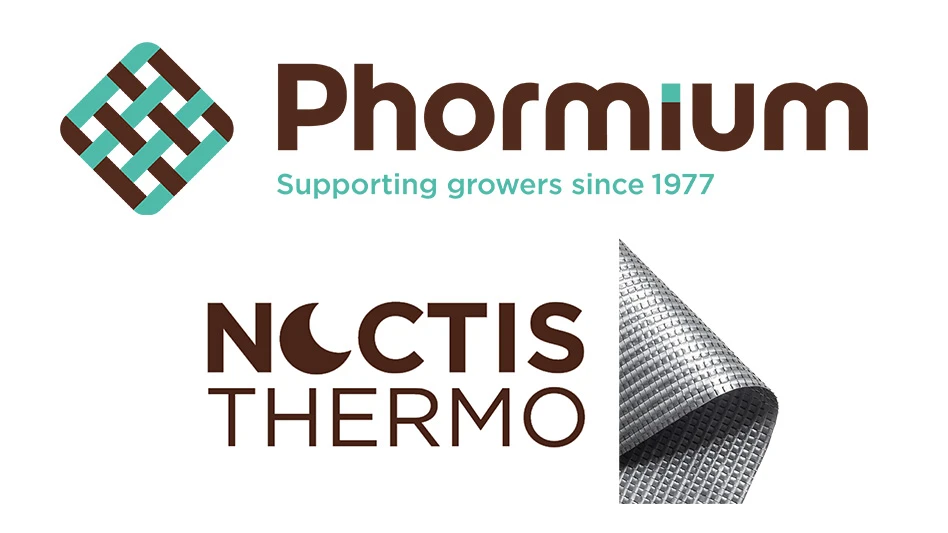
Once again, poinsettia season is upon us, and greenhouses are filling up. Although the crops are still young and some freshly planted, take a little time to reflect on what your plans are for ensuring your crops gets off to a strong start. Last fall, we discussed some key steps to finishing poinsettias, so let’s take some time now to cover how to ensure you are getting off to a good start. (Editor's note: Read Finishing poinsettias: Tips for success at bit.ly/poinsettias-finishing-tips)
Establishing and maintaining nutrition is important for poinsettias, as they are not light feeders with respect to fertilizer. Fertilizer can be provided right away when rooted cuttings are planted. The target range of electrical conductivity (EC) in the root zone is 2.0 to 2.5 mS/cm on the low end and 4.0 to 4.5 mS/cm on the high end, using the pour-through method of measuring substrate EC. Regular substrate testing will help you maintain the EC within this range. While this range is the general recommendation for poinsettias in general, there can be variation among them. Specifically, cultivars with darker green leaves tend to be heavier feeders, whereas those with lighter green leaves require less.
In addition to managing irrigation, warm air temperatures can pose other challenges, both before and after short days start. Before short days — when plants are growing vegetatively — heat stress can cause leaves to develop irregularly, often getting narrow and longer. Unfortunately, nothing can be done to remedy this. The best approach is to try and prevent heat stress as much as possible by maximizing the effectiveness of cooling systems, using shade, etc. to cool the environment. Additionally, unfolding new, healthy leaves (including bracts) and promoting their expansion can help cover up deformed heat-stressed leaves.

Once short days start, warm air temperatures during inductive long nights can delay the onset of flower initiation, commonly referred to as heat delay. And this is especially common for the earliest crops which use black cloth to create short days. In addition to selecting varieties that are less susceptible to heat delay, there are a few steps you can take to minimize it. First, aluminized blackcloth has a reflective outer layer that reflects sunlight and some of the radiant energy in it, reducing temperatures under the cloth. Another strategy for automated systems is to open up or retract the cloth once the sun is set and it is dark outside. This allows the warm air trapped under the cloth to escape. Prior to sunrise, position the cloth over the plants to keep them in the dark until your target night length is achieved. Finally, shift the time of day you are blocking light. Instead of pulling cloth over the crop when it is still warm, pull the cloth later in the day when it is cooler, or perhaps don’t cover the crop until just before sunrise; then leave the plants covered later into the morning, since this is the coolest part of the day.
Regulating plant growth starts right away with poinsettias. Be sure you are using graphical tracking to take the guesswork out of determining if you need to apply plant growth retardants (PGRs), and measuring heights immediately after planting for un-pinched or straight-up forms, or at pinching for pinched plants. Before short days start, any gibberellic acid-inhibiting active ingredient can be used to control poinsettia height. While all the gibberellin inhibitors can be applied as a foliar spray, daminozide or a tank mix of daminozide and chlormequat chloride are popular choices early on. Switching application methods, applying early drenches of triazoles such as flurprimidol, paclobutrazol, and uniconazole can provide excellent and long-lasting growth control. When in doubt, err on the side of less active ingredients to avoid stunted plants and follow up with graphical tracking.
While this article has focused on environmental conditions and cultural requirements, insect and disease control is also important. Make sure you have the right supplies (shelf-stable products) on hand or on order (for live biological control agents). Preventative application of fungicides — conventional or biorational chemistries — should start at planting to establish protection from root pathogens right away. And remember, biocontrol agents are more effective when they are used before pest thresholds are exceeded, so establishing them early can also help later.
While the finish line is still a couple of months away, the actions we take now (or don’t!) affect the final product. A proactive approach to successful early establishment and growth will pay off with finished poinsettia quality.

Explore the September 2023 Issue
Check out more from this issue and find your next story to read.
Latest from Greenhouse Management
- This month's Greenhouse Management magazine is about native plants and sustainability
- The HC Companies, Classic Home & Garden merge as Growscape
- Terra Nova releases new echinacea variety, 'Fringe Festival'
- Eason Horticultural Resources will now officially be known as EHR
- BioWorks receives EPA approval for new biological insecticide for thrips, aphids, whiteflies
- ScottsMiracle-Gro transfers cannabis subsidiary to focus on core lawn and garden business
- Should we start calling natives 'eco-beneficial plants'?
- Ellen Mackenbach-Lakeman appointed new CEO of Dümmen Orange







